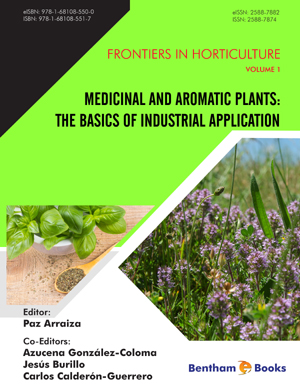Abstract
Pharmacological activity in plant-based drugs is centred on the presence of chemical compounds which we call active compounds. Active components are substances which are found in different parts and organs of plants, which change or modify the functions of human and animal organs and systems. There is a huge variety of active components, of which the most important are secondary metabolites such as essential oils, alkaloids, glycosides and phenolics. There are many classifications but we will use the following classification in four groups according to chemical structure: glycosides, phenolics, terpenoids, and alkaloids. These in turn are sub-divided into other groups according to their chemical structure. In this chapter, a classification, description function and examples of these active compounds is presented. We will make reference to secondary metabolites only, due to their significance as a source for active ingredients.
Keywords: Active compounds, Alkaloids, Anthraquinonic glycosides, Cardioactive glycosides, Coumarins, Cyanogenic glycosides, Diterpenes, Essential oils, Flavonoid glycosides, Flavonoids, Glycosides, Iridoids, Isoquinoleine, Isothiocyanate glycosides, Lactones, Lignans, Phenolic acids, Phenolic glycosides, Phenolics, Polyphenols, Quinine, Quinones, Saponins, Tannins, Terpenoids, Tropane.






















